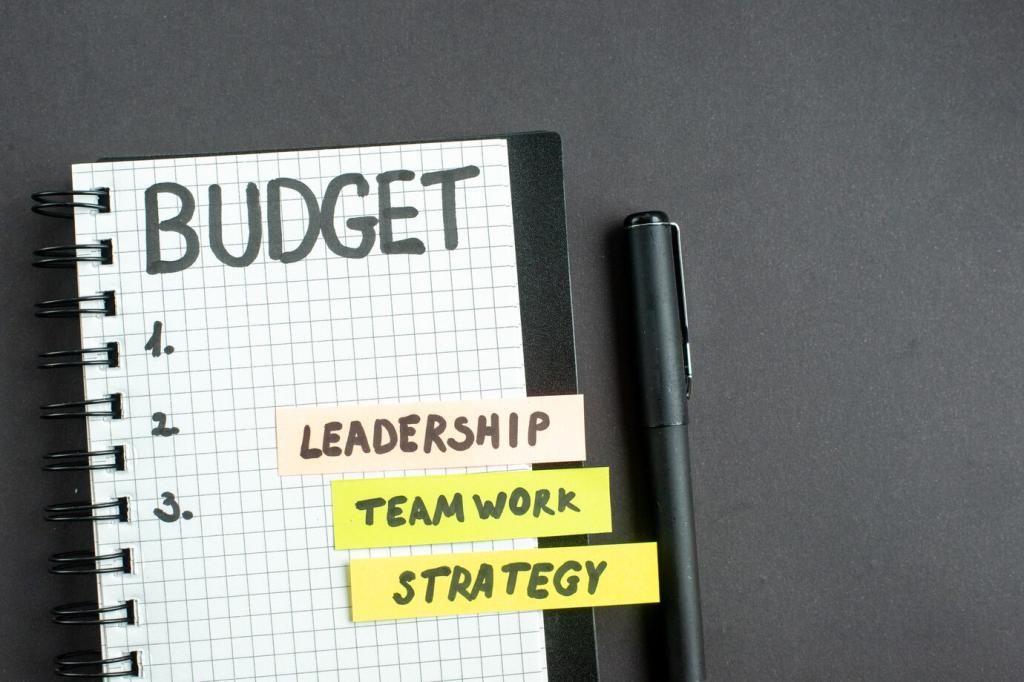
Interactive Budgeting Techniques: Turn Numbers Into Everyday Wins
This week’s chosen theme: Interactive Budgeting Techniques. Discover playful, hands-on ways to make money decisions tangible, collaborative, and consistent. Jump in, try an exercise, and subscribe for new interactive prompts every week.
Forget static spreadsheets gathering dust. A living budget responds when you move sliders, drag categories, or reassign envelopes, turning every small adjustment into a quick, satisfying decision loop.
Start Here: What Interactive Budgeting Really Means
Gamify the Grind: Make Saving Feel Like Play
Streaks, badges, and boss levels
Track consecutive no-spend days, award badges for meeting category caps, and set a monthly boss level like negotiating a bill. Visual streaks create momentum, while small celebrations keep the quest enjoyable and human.
Weekly quests and side missions
Create a primary quest such as trimming grocery waste by ten items, plus side missions like skipping rideshares. Share your quests with a friend, then report progress Sunday to reinforce commitment and laugh together.
Reward portals that cost nothing
Pair money wins with joyful, no-cost rewards: a scenic walk, a saved playlist, or a home spa night. The reward portal keeps dopamine flowing without erasing savings; comment with your favorite free rituals.
Tools That Invite Participation
Add sliders that shift dining-out versus groceries, or adjust savings rates by percent. Watching charts react instantly teaches trade-offs intuitively, and you’ll start experimenting more, learning faster than passive tracking ever allowed.
Use zero-based budgeting apps that prompt you to assign every dollar, then build rules like auto-move leftovers to goals. Rules create consistent behavior while still letting you confirm choices with a single tap.
Set reminders that pose questions: Approve this transfer? Delay it? Split it? When software respects your agency, you stay engaged. Share the prompts that nudge you best, and we’ll test them in future posts.

Collaborative Budgets That Bring People Together
Hold a ten-minute stand-up each Thursday: review envelopes, pick one optimization, and schedule a date-night reward. Keep tone curious, not accusatory. Drop your favorite agenda template in the comments to help newcomers.
Collaborative Budgets That Bring People Together
Label transparent jars with shared goals, then act out transfers after dinner so kids see priorities moving. Invite them to suggest swaps. The performance builds ownership, empathy, and surprisingly insightful questions about trade-offs.
Visual Feedback Loops You Can Feel
Color months by intensity of inflows and outflows, then add small notes describing feelings during spikes. Patterns emerge quickly, helping you link emotions to spending triggers and create targeted, interactive countermeasures next month.


Visual Feedback Loops You Can Feel
Build a simple Sankey flow showing where each paycheck travels. The first time I tried this, I reclaimed a forgotten subscription immediately. Share your chart screenshots, and we’ll feature clever layouts readers love.
Behavioral Design for Lasting Momentum
Pre-fill weekly transfers, place savings jars at eye level, and set phone widgets that show goal progress first. Friction is strategic: reduce it for saving, increase it slightly for discretionary spending.
Behavioral Design for Lasting Momentum
Use light commitments like posting a goal to friends, paired with a reasonable opt-out rule. Knowing you can adjust thoughtfully lowers anxiety while preserving accountability, which keeps the interactive rhythm sustainable long-term.


